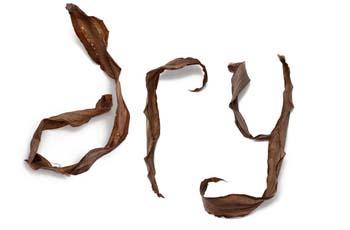Drought Praise: 5 Blue-Tag Beauties for Dry Gardens

If you live in a semi-arid climate where rain is a vague memory and the soil is crunchy with gravel, you may find yourself praising the color and resilience of blue-tag plants from Flowers by the Sea.
Persnickety though they may be about avoiding damp roots, they'll likely feel right at home in your yard. These are excellent plants for dry gardens.
What Is a Blue Tag?
Normally, we only insert a single marker with plant name and care instructions in our plant pots. However, blue tag plants also have blue markers warning you that they are hypersensitive to overwatering after their roots are established.
Not all of our drought-tolerant plants fall into the blue-tag category. Yet ones that do are extremely capable at surviving with little water.
Blue-tag species need soils high in mineral content that provide sharp drainage, such as sandy soils. These plants often are skillful at handling both heat and cold in full sun locations. However, like the Wicked Witch of the West in the Land of Oz, they might curl up and die if you toss too much water at them.
Approximation of Native Conditions
Blue-tag species are native to California, the Southwest, Texas, the Canary Islands, the Middle East, the Mediterranean, Spain, and high altitude steppe lands, such as in Turkey.
Most are challenging to grow unless planted in areas with conditions approximating their native environments, which include low-fertility soil (whoa on the nitrogen!) and loose, gravelly soils.
Once they are well rooted, blue-tag species are susceptible to the problems of overwatering -- such as root and crown rot -- when their roots aren't well aerated.
For yards with clay or compacted soil, we recommend improving drainage by amending the soil with fine gravel or pebbles.
Five of Our Favorites
If you live in parts of the West where turf is becoming an endangered species due to lack of rain and snow, don't just let your yard go brown. Low water — also called xeric —landscaping is the key to maintaining a pleasant yard, a healthy environment and good property values.
Xeriscape is also crucial to supporting small wildlife from earthworms aerating soil to the hummingbirds, bees, butterflies and other beneficial insects that pollinate plants.
Here are five of our favorite drought-fighting, blue-tag beauties that should win praise from local water and zoning authorities as well as neighborhood associations.
Indian Milkweed (Asclepias eriocarpa) Zones 4 to 9
- Pink and cream flowers bloom in summer
- Smooth, mint-green foliage
- 36 inches tall and 24 inches wide in bloom
- Full sun
- Cold- and heat-tolerant perennial
- Monarch Butterfly nectar and host plant
Scallop Shell Horehound (Marrubium supinum) Zones 6 to 10
- Bicolor lavender flowers bloom in summer
- Fragrant, felted, white-green foliage
- 18 inches tall and 24 inches wide in bloom
- Full sun
- Cold- and heat-tolerant perennial groundcover
- Hummingbirds
Santa Rosa Island Sage (Salvia brandegeei) Zones 7 to 9
- Lavender-blue flowers bloom winter to spring
- Deep green, wrinkly, fragrant foliage
- 48 inches tall and 36 inches wide in bloom
- Full sun
- Shrub
- Honeybees
Golden Leaf Sage (Salvia chrysophylla) Zones 6 to 9
- Lavender and pale cream flowers bloom spring to summer
- Fuzzy, mint-green foliage
- 20 inches tall and 18 inches wide in bloom
- Full sun
- Cold- and heat-tolerant perennial
Giant Purple Desert Sage (Salvia pachyphylla 'Blue Flame') Zones 5 to 9
- Light purple flowers with burgundy bracts bloom summer to fall
- Fragrant, silvery green foliage
- 36 inches tall and 24 inches wide in bloom
- Full sun
- Cold- and heat-tolerant shrub
- Butterflies, honeybees, hummingbirds
Blue-Tag Care Instructions
FBTS emails you care instructions when ordering any of our plants. However, we add an additional email about plant maintenance for blue-tag species. One tip to keep in mind before your delivery is that all plants go into temporary dormancy in a box.
You need to open your package as soon as it arrives and place the plants outdoors in partial shade for a few days to wake up, harden off and become ready for planting. Life in a box is particularly hard on semi-arid species. Blue tag plants may not appear cosmetically perfect when they arrive, but they should perk up rapidly.
If you have questions about xeric gardening or any of our plants, don't hesitate to contact us. We're glad to help you keep your world green.

 Salvia pachyphylla 'Blue Flame'
Salvia pachyphylla 'Blue Flame'  Salvia chrysophylla
Salvia chrysophylla
Comments
There are no comments yet.